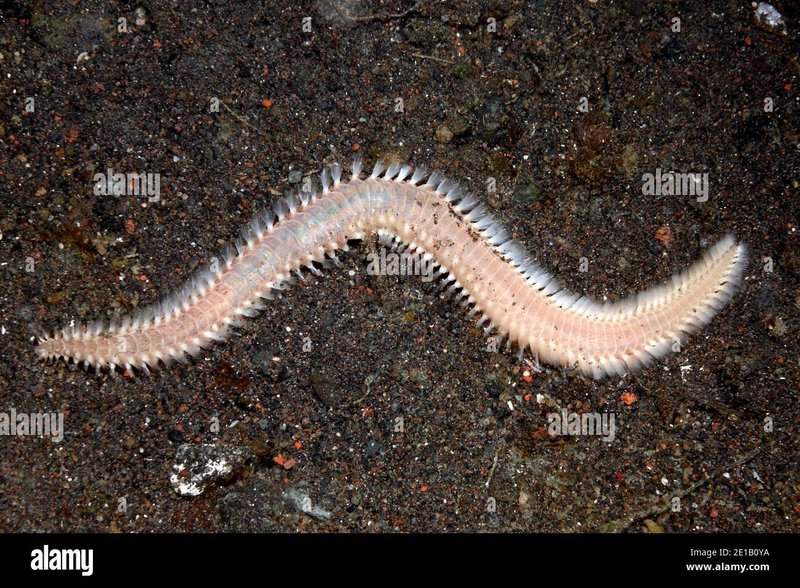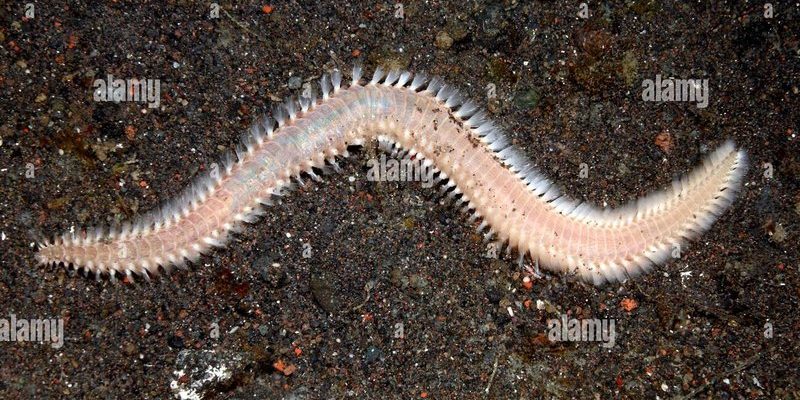
Bristle worms belong to the group of annelids, and they’re crucial for a healthy aquarium. They help break down organic matter, keeping your tank clean and balanced. But as with anything in life, there comes a limit to their growth. Understanding the maximum size of bristle worms can help you maintain an enjoyable and clean aquarium. So grab a cup of coffee, and let’s explore the fascinating world of bristle worms together.
What Are Bristle Worms?
Bristle worms are a type of segmented worm, primarily found in marine environments. They’re part of the Polychaete family, which means they have many bristles—hence the name! You might be surprised to learn that there are over 10,000 species of these worms, and they vary widely in size, color, and habitat. Most home setups encounter the ones from the genera *Eunice* and *Hermodice*.
These worms play an essential role in the ecosystem, feeding on detritus, algae, and even leftover food. This makes them a great addition to your aquarium, as they help keep the environment clean. However, if their population gets out of hand, they can become a nuisance.
Maximum Size of Bristle Worms
So, how big can bristle worms get? In a home aquarium, you’re likely to see them reach sizes of around 4 to 6 inches, although some species can grow up to 12 inches or more in optimal conditions. It’s fascinating to think about how these creatures can pack such a punch in relatively small spaces!
The size of bristle worms largely depends on factors like food availability, water quality, and habitat. If your aquarium has plenty of organic matter and detritus for the worms to munch on, they’ll thrive! On the flip side, if conditions aren’t favorable, their growth may be stunted.
Factors Influencing Their Growth
There are a few key factors that can influence how large bristle worms grow in your home setup. Here are the primary ones to keep in mind:
- Food Supply: Like any living organism, bristle worms need food to grow. A tank with ample organic waste will allow them to thrive.
- Water Quality: High-quality water conditions—good pH balance, low ammonia, and stable temperatures—will promote healthy growth.
- Space and Environment: The type of environment you provide, including hiding spots and substrate, can impact their development.
If you want your bristle worms to reach their potential size, ensure your aquarium provides the right conditions. It’s like giving them an all-you-can-eat buffet and a cozy home!
Are Bigger Worms Better?
You might be wondering if bigger bristle worms are necessarily better for your tank. The answer isn’t straightforward. Larger worms can be beneficial because they contribute more effectively to breaking down debris and keeping your tank clean. However, an overpopulation of larger bristle worms can lead to problems.
Too many bristle worms can consume all the organic matter, leading to a lack of food for other beneficial organisms in your aquarium. It’s essential to strike a balance. If you notice the population growth is outpacing what seems healthy, consider adjusting your feeding routine or introducing other cleanup crew members.
Controlling Bristle Worm Populations
If your bristle worm population does seem to be getting a bit too lively, don’t panic! There are steps you can take to manage their numbers while keeping your tank healthy. Here are some methods to control their populations:
- Reduce Feeding: Cut back a little on the amount of food you’re providing. This can limit the food source for the worms.
- Add Predators: Some fish and other invertebrates enjoy snacking on bristle worms. Just make sure any new additions are compatible with your setup.
- Trap Them: You can create traps specifically for bristle worms. A simple method involves using baited traps that lure them in, making it easy to remove them.
Controlling the population can help ensure your tank remains balanced and enjoyable for all its inhabitants.
In short, bristle worms can reach impressive sizes, particularly in a healthy home aquarium setup. Depending on conditions, they can grow between 4 to 6 inches, with some species even hitting 12 inches! While they can be beneficial members of the aquarium community, it’s important to keep an eye on their populations.
By managing their environment and feeding habits, you can enjoy the benefits of bristle worms without the headaches. So, the next time you spot one of these little guys wriggling in your tank, you can appreciate them for the helpful creatures they are. Happy fishkeeping, and may your bristle worms find the perfect balance in your underwater world!

